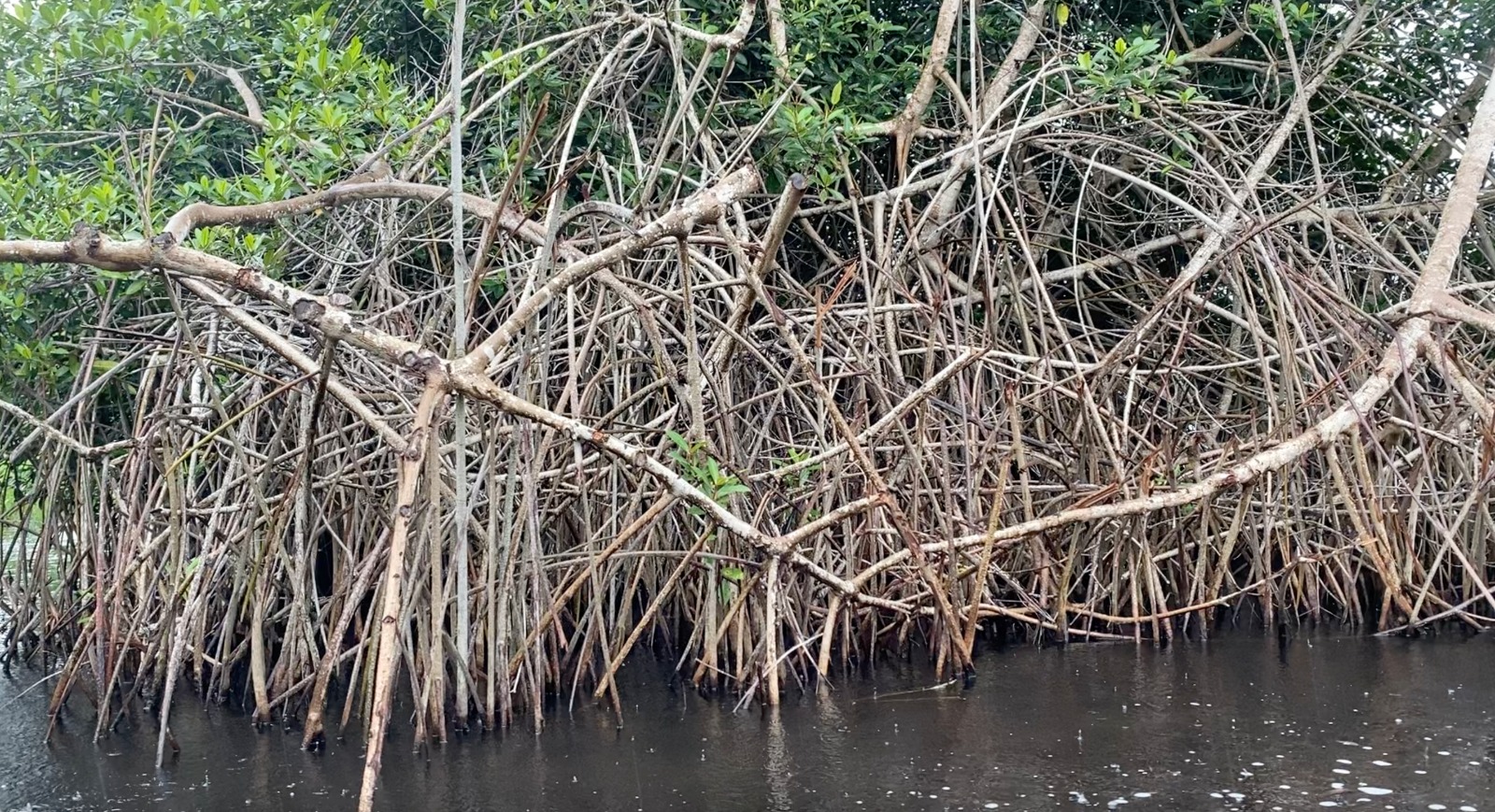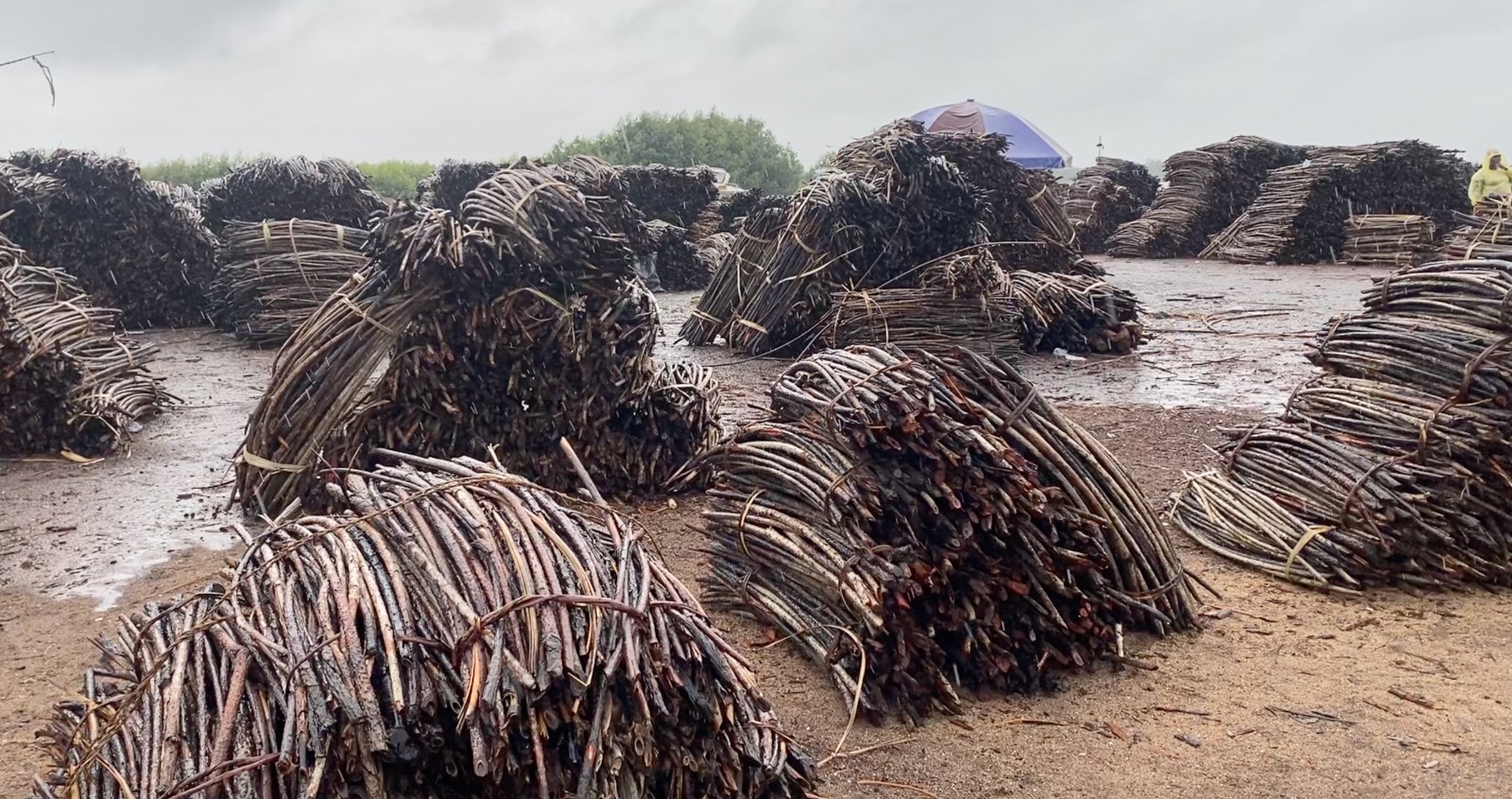Stopping Coastal Erosion: A widow’s contribution
Under a shady airy neem tree at the Anloga District Forestry Commission Office in the Volta Region sits Madam Mawunyo Nyangbe.
The widow enjoys the company of her two children and a forestry official as she picks a black plastic bag, and scoops loamy soil with a mini shovel to fill them.
She carts the bags to a central point well-arranged and ready for the nursing of seeds for mangroves.
Mawunyo’s target is to fill 5,000 sandbags a month for the seedlings. She does this singing melodious local songs and occasionally cracking jokes with her children and officials of the Forestry Commission to kill boredom.
As an indigene of Bomingo, an island at the centre of nowhere, Mawunyo, 57, knows the importance of mangroves to fighting coastal erosion and voluntarily dedicates more than 12 hours every week towards that activity.

Her motivation for committing to such an activity is not because of the monthly GHC 500 (about USD50) stipend by the Management of Mangroves Forest from Senegal to Benin project (PAPBio C1-Mangroves’).
But the cry of her people of how tidal waves are washing away their communities and destroying livelihoods and social life.
It is exactly a year Mawunyo committed to supporting the regeneration of degraded mangroves in her community.
She is just one of nearly 80 women drawn from Galotse, Bomingo, Galo, Galosota, Anyanui, and Agbledomi to fill sandbags for nurseries.
They have so far planted 27 hectares of degraded land made up of mangroves and woodlots in the Keta Lagoon Complex Ramsar Site.
Some 84,000 seedlings of different tree species such as Rhizohpora (white) and Avicenia (red) mangroves, acacia, Cacia, and mahogany have been transplanted and nurtured in the areas.
The exercise is part of the PAPBio C1-Mangroves project being implemented through Small Grants by A Rocha Ghana, Kasa Initiative and the Development Institute.
It is seeking to strengthen the management of protected areas and unprotected mangrove sites through enhanced linkages between governance and production systems.
Apart from Ghana, the European Union funded project is being implemented in nine countries – Senegal, Gambia, Guinea Bissau, Guinea, Sierra Leone, Liberia, Togo, and Benin.
Why the restoration is crucial?
Experts say the dense roots of mangroves help to bind and build soils and that the increasing thickness of the mangrove soil is critical as sea level rise accelerates.
Also, more than one per cent of the global population of two species of waterbird (Whiskered tern and the Caspian tern) live within the Keta Lagoon Complex.
It provides services, including feeding, roosting and nesting sites.
Mr Lawrence Tetteh Ocloo, the Manager of the Wildlife Division of the Forestry Commission at Keta Lagoon, tells the Ghana News Agency (GNA) that the Lagoon is the home of the world’s only amphibious buck, the sitatunga.

The Lagoon complex also provides habitats for many wetlands dependent wildlife, including three globally threatened turtle species (leatherback, green and olive ridley turtle).
Mr Ocloo says the Lagoon waters provide important habitats and nurseries for migratory and juvenile fish populations, which are critical in fish stock replenishment.
“Over fifteen families of fin fishes comprising 18 genera and 20 species have been recorded. The wetland is also home to African/Royal pythons, several species of rodents, the Nile monitor, manatees and macro-invertebrates such as crabs, molluscs and shrimps,” he says.
For Mr Ocloo, nurturing of mangroves is one of the key nature-based solutions that helps to address the three planetary issues – climate change, biological diversity, and pollution through the absorption of greenhouse gases.
“Studies and practice have shown that mangroves’ biggest strengths lie in their ability to capture and store carbon,” he says.
The Challenge
Despite the immense resources and benefits derived from the Keta Lagoon, studies reveal that the mangroves and dense forests have declined significantly by 24 per cent since 1991.
About 17 of the 24 per cent of mangrove surface area has decreased in recent years, according to GMES & Africa (2020).
The GNA learns that there are no laws protecting mangroves and that in the case of Keta, they are owned by families.

Fishes are being overexploited while contamination of fresh water supplies and indiscriminate waste disposal occur more frequently, according to Lamptey and Ofori-Danson, 2014; Brinks, 2017.
Nationally, as much as 24.3 per cent of mangrove cover has been lost to herbaceous shrubs/grasslands and built-up areas (EPA, 2018).
Mr Anthony Adeea Mba, Project Assistant at the International Union for Conservation of Nature (IUCN) Ghana Project Office, says the site is of international importance with key biodiversity resources.
The initiative is one of the critical activities towards sustainability of the source of fuel and the protection of the ecology.
“What compelled members of these communities, especially those whose livelihood depend on the resources, to willingly engage in the regenerative activity is that they realised they were getting low harvest of many of the fisheries resources. So, a sensitisation on the happenings motivated them,” he says.
On governance, the project has supported the Wildlife Division to review the management plan of the complex developed in 1999, taking into account current issues and modern approach towards addressing them.
Mr Mba says through the project, a grant scheme is set up for local organisations to undertake research, advocacy and build capacity of community members in alternative livelihood.
A Rocha Ghana for instance has built the capacity of community members in alternative livelihood schemes, including tailoring and mat weaving.
Farmers, especially those engaged in vegetable, fruits and roots production from some communities have been exposed to climate-smart agriculture practices and supported with agro-inputs, Mr Prosper Kwame Antwi, the Programmes Manager for A Rocha Ghana tells GNA.
School children in the communities, he says, have received education on the importance of restoring mangroves, the threats and sustainable use, he adds.
So, it is not surprising to see Mawunyo’s children around her and asking questions about how to protect nature.
They and many others are of strong view that the government must enact a law to protect mangroves and enforce them.
That way, the country can achieve critical sustainable development goals like zero hunger, climate action, life below water and poverty reduction.



